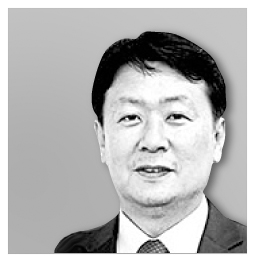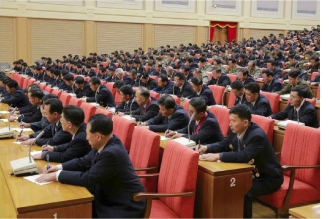The knowledge threat

*The author is an editorial writer of the JoongAng Ilbo.
Will we be able to live in peace if North Korea eliminates nuclear materials, weapons and facilities following a June 12 summit between Pyongyang and Washington? The answer is no as long as the fundamental danger exits. Let’s visualize a future in the worst-case scenario.
North Korean leader Kim Jong-un reactivates his nuclear weapons program by walking away from a deal with U.S. President Donald Trump, claiming Washington has breached an agreement to guarantee his regime’s security by backing a democratization movement in the North. Pyongyang lambasts Washington for meddling in its internal affairs by supporting rebel forces on the pretext of improving civil rights in the nation.
Although North Korea shipped nuclear missiles and materials to the United States, it can easily revive its nuclear weapons program. The blueprint to extract nuclear materials and weaponize them remains in the heads of North Korean scientists and engineers. North Korea has the largest deposits of uranium in the world.
North Korea was able to produce centrifuges capable of separating and enriching uranium to weapons grade since 2009. A centrifuge is just 1 to 2 meters (3.28 to 6.56 feet) high and 20 centimeters (7.87 inches) wide. Thousands of them can be hidden in underground bunkers. A year’s running of 2,000 centrifuges can generate 20 kilograms (44 pounds) of highly enriched uranium to be used as a nuclear explosive. Unlike a plutonium bomb, a uranium bomb does not need to be tested. Therefore, the destruction of the Punggye-ri nuclear test site — scheduled for between May 23 and 25 — did not rid the country of its nuclear development capability.
American troops would have been phased out of South Korea by then in line with the nuclear disarmament in North Korea. Uncle Sam’s automatic engagement to protect South Korea from any North Korean attack has been removed. South Korea would become helpless if North Korea resumes nuclear threats after the U.S. military completely pulls out.
Although dreadful, the scenario is not entirely far-fetched. The Trump administration has recently spoken of permanent dismantlement to stamp out such a possibility. The skeptical scenario was based on lessons from Libya and Ukraine.
Libya’s strongman Muammar Gaddafi was toppled and assassinated by rebel forces eight years after he gave up his weapons program in 2003. Ukraine was promised peace and independence after it handed over 4,200 nuclear bombs to Russia after the collapse of the Soviet Union. But after Russia invaded Crimea in 2014, Ukrainians are demanding a revived nuclear deterrence against Russia’s territorial ambitions.

North Korean nuclear scientists, engineers and other staff were invited to an award ceremony staged by their leader Kim Jong-un after an allegedly successful hydrogen bomb test in 2016. [RODONG SINMUN]
Control over such scientific knowledge, therefore, is essential to removing any future threat. There was a report that Pyongyang turned down Washington’s request to send scientists and engineers overseas.
After a brief mention, the slogan of “permanent” dismantlement of North Korean nuclear weapons was replaced by “complete,” which suggests Washington may settle for physical disarmament.
But we must not concede to much at this highly delicate time. North Korea won’t easily give up its nuclear weapons and its scientist and engineers — its nuclear brain trust. Washington must come up with a concrete plan to keep a close watch on North Korean nuclear specialists. Otherwise, the nuclear threat could resurface in the future.
JoongAng Ilbo, May 15, Page 30










with the Korea JoongAng Daily
To write comments, please log in to one of the accounts.
Standards Board Policy (0/250자)